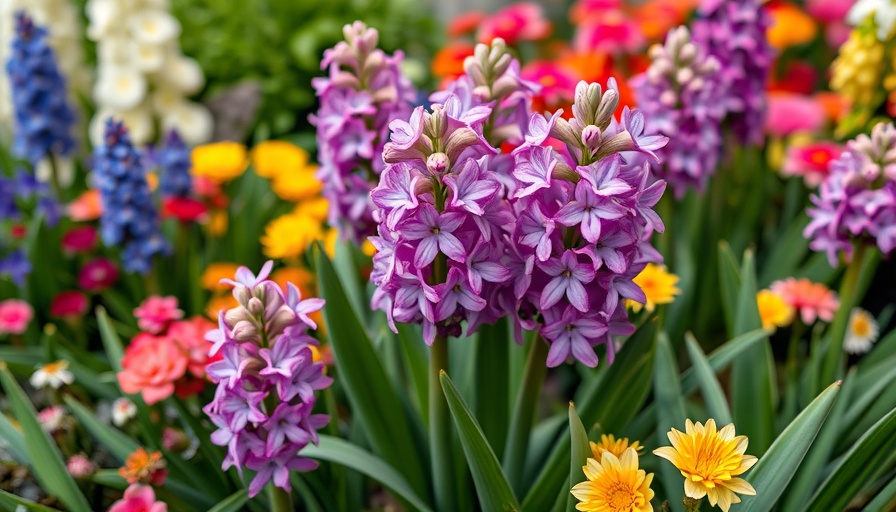
Understanding Hyacinth Growth: What Makes Them Bloom?
Hyacinths (Hyacinthus spp.) are renowned for their stunning array of colors and delightful fragrance. Home gardeners often look forward to their vibrant blooms heralding the arrival of spring. However, many are dismayed when their hyacinths grow vigorously but fail to produce flowers—a phenomenon known as 'blindness.' In this article, we delve into the top reasons why hyacinths may not bloom, and how to encourage their fruitful display.
1. The Importance of Bulb Age
Even the most meticulously tended bulbs can experience a decline in performance as they age. Typically, hyacinths can thrive for about five years under optimal conditions, but hybrid bulbs tend to have shorter lifespans compared to their straight species counterparts. To maintain a beautiful spring show, it's crucial to refresh your bulb stock by replacing them every three to four years. This way, you won't be caught off guard when your old bulbs fail to bloom.
2. Avoiding Overcrowding for Healthier Plants
As hyacinths flourish, they naturally reproduce by creating offsets. While this can enhance your garden's visual appeal, overcrowding can quickly lead to competition for essential nutrients and water, diminishing bloom potential. To promote healthy growth and prevent crowding, early fall is the perfect time to divide your bulbs and space them adequately—around three to five inches apart, buried four to six inches deep. This not only enhances individual bulb performance but significantly boosts the chances of flower production in the following spring.
3. Understanding Nutrient Balance in Fertilizers
While nutrients are vital for plant growth, the balance is critical. Excess nitrogen can lead to lush foliage at the expense of flowering. Hyacinths thrive on fertilizers with a balanced NPK ratio, ideally around 5-10-5. This ensures that your plants receive adequate phosphorus and potassium, essential for blooming. Conducting a soil test can help you better understand your garden's nutrient profile and make informed decisions about fertilization.
4. Light Needs: The Key to Blooming Hyacinths
Hyacinths require full to partial sun to thrive. Inadequate sunlight exposure can stunt their growth and prevent blooming. When planning your flower garden, be mindful of your plants’ sunlight requirements, ensuring they have access to sufficient light throughout the day, preferably six to eight hours of sun.
5. The Risks of Indoor Forcing
Forcing hyacinths indoors can be rewarding; however, if they do not receive adequate light or if environmental conditions are not closely monitored, they may fail to bloom or produce only leaves instead. By following proper forcing techniques, such as maintaining cooler temperatures and providing adequate moisture, you can foster healthier indoor blooms.
6. Dealing with Pests: Mice and Their Impact
As charming as hyacinths are, they can attract unwanted visitors like mice. These rodents are known to dig into bulbs, damaging them before they get a chance to flower. Implementing pest control strategies, such as utilizing repellents or barriers, can safeguard your bulbs and ensure they grow up free from interference.
7. Managing Moisture Stress
Both over-watering and under-watering can severely affect your hyacinths' blooming capacity. Ensuring well-drained soil is critical as hyacinths are susceptible to rot. Conversely, consistent moisture is vital for their growth. Striking the right balance is key, and investing in well-draining soil amendments or raised beds can significantly improve your plants' outcomes.
8. Planting Depth Matters
When planting your bulbs, proper depth is essential. If hyacinths are planted too deep, they may struggle to reach the surface, leading to minimal growth and no blooms. A standard guideline is to plant bulbs about three to four times their height, ensuring they have a good start for healthy growth.
9. Weather Factors and Their Influence
Weather patterns can also significantly impact the blooming of hyacinths. Late frosts or unusual temperature fluctuations can hinder flowering. As gardeners, it's essential to stay informed about seasonal trends to adapt your gardening practices accordingly.
Conclusion: Nurture Your Hyacinths for a Vibrant Garden
By understanding the nuances of hyacinth care—from their age and light requirements to pest management and moisture control—you can boost their bloom potential and ensure your garden is alive with color come spring. Consider evaluating your garden practices and making adjustments where necessary. Cultivating successful blooms encourages not only personal satisfaction but also enriches the community spirit through shared gardening stories.
For more tips on flower gardening and how to achieve stunning blooms, be sure to explore resources on DIY gardening projects. Your journey towards a vibrant garden starts here!
 Add Row
Add Row  Add
Add 




 Add Row
Add Row  Add
Add 

Write A Comment